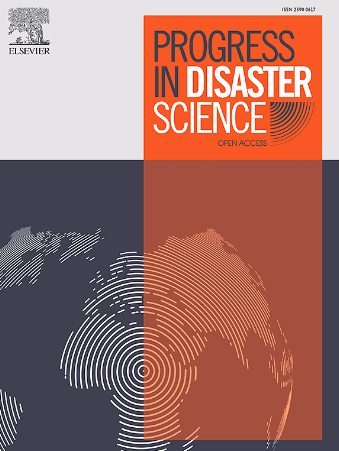自然灾害中的建筑损害评估:结合领域知识、3D机器学习和众包的跨学科和跨学科方法
IF 3.8
Q3 ENVIRONMENTAL SCIENCES
引用次数: 0
摘要
最近的自然灾害夺去了许多人的生命。可靠的灾害预测和及时的评估对于有效的救援行动规划和有效分配有限的资源至关重要。目前,专家在现场进行人工损伤评估,这是资源和时间密集型的。为了解决这个问题,我们提出了一个综合领域知识、自动化计算方法和众包优势的跨学科和跨学科概念。目标是在自然灾害发生后提供相关和及时的损害信息。针对地震损害用例提出的具体实现包括:(1)开发一套新颖、创新的方法;(2)将这些方法组合起来以获得及时、可靠的损害信息;(3)在所有组件之间完全定义的接口,以确保自动化数据流;(4)作为一个完全开源的框架实施;(5)终端用户从一开始就参与框架的开发,贡献他们的专业知识。与其他现有的单独解决方案相比,我们的跨学科实施已经证明可以在灾害情况下提供快速准确的信息,帮助管理后果并挽救生命。由于其开源实现以及模块和接口的灵活性,我们认为该实现可转移到各种类型的自然灾害中。本文章由计算机程序翻译,如有差异,请以英文原文为准。
Building damage assessment in natural disasters: A trans- and interdisciplinary approach combining domain knowledge, 3D machine learning, and crowdsourcing
Recent natural disasters have claimed many lives. Reliable damage predictions and timely assessments are essential for effective rescue operation planning and efficient allocation of limited resources. Currently, experts in the field perform damage assessment manually, which is resource- and time-intensive. To address this issue, we propose a general trans- and interdisciplinary concept that combines the strengths of domain knowledge, automated computational methods, and crowdsourcing. The objective is to provide relevant and timely damage information after a natural disaster. The specific implementation presented for the earthquake damage use case includes (1) the development of a set of novel, innovative methods, (2) their combination to obtain timely and reliable damage information, (3) fully defined interfaces between all components to ensure an automated data flow, (4) implementation as a fully open-source framework, and (5) the participation of end users in the development of the framework from the beginning, contributing their expertise. Compared to other existing individual solutions, our interdisciplinary implementation has shown to provide fast and accurate information in disaster situations, aiding the management of consequences and saving lives. We consider the implementation transferable to various types of natural hazards due to its open-source realisation and the flexibility of its modules and interfaces.
求助全文
通过发布文献求助,成功后即可免费获取论文全文。
去求助
来源期刊

Progress in Disaster Science
Social Sciences-Safety Research
CiteScore
14.60
自引率
3.20%
发文量
51
审稿时长
12 weeks
期刊介绍:
Progress in Disaster Science is a Gold Open Access journal focusing on integrating research and policy in disaster research, and publishes original research papers and invited viewpoint articles on disaster risk reduction; response; emergency management and recovery.
A key part of the Journal's Publication output will see key experts invited to assess and comment on the current trends in disaster research, as well as highlight key papers.
 求助内容:
求助内容: 应助结果提醒方式:
应助结果提醒方式:


